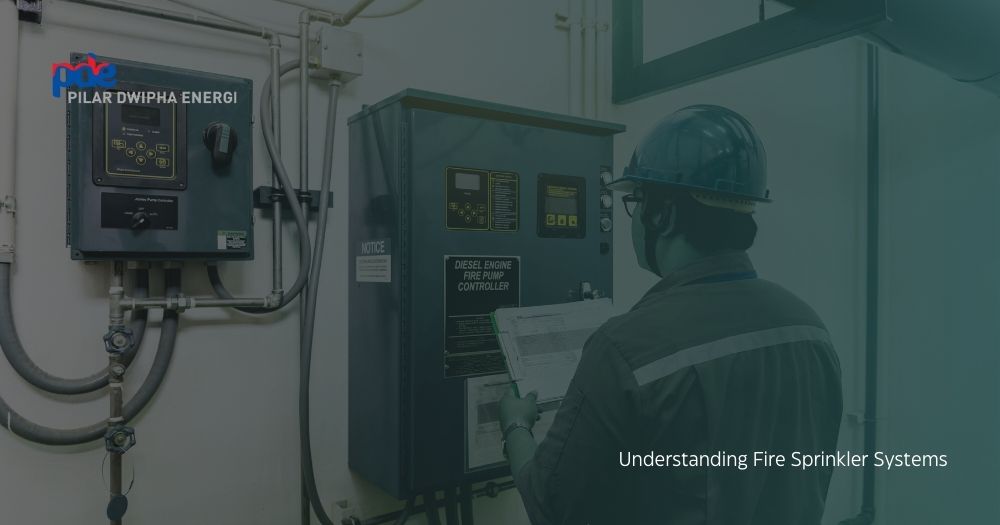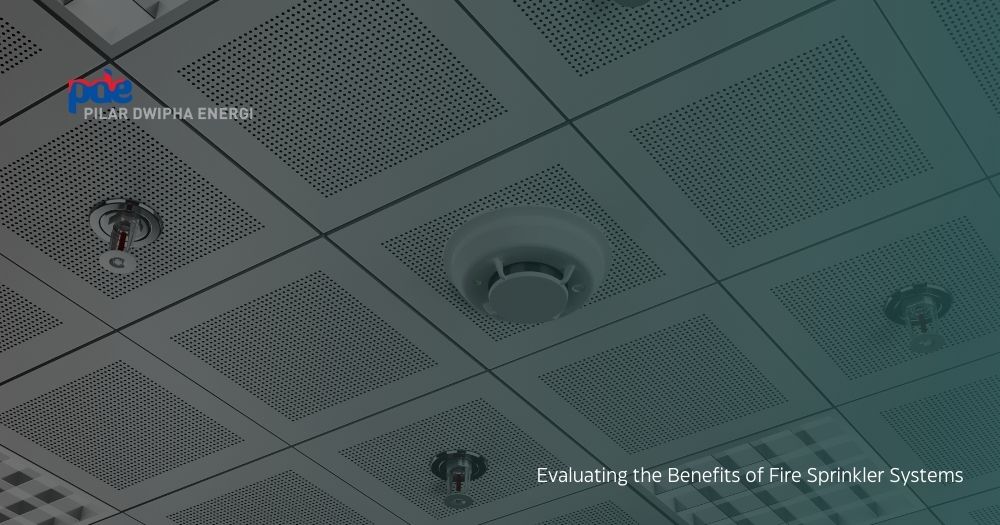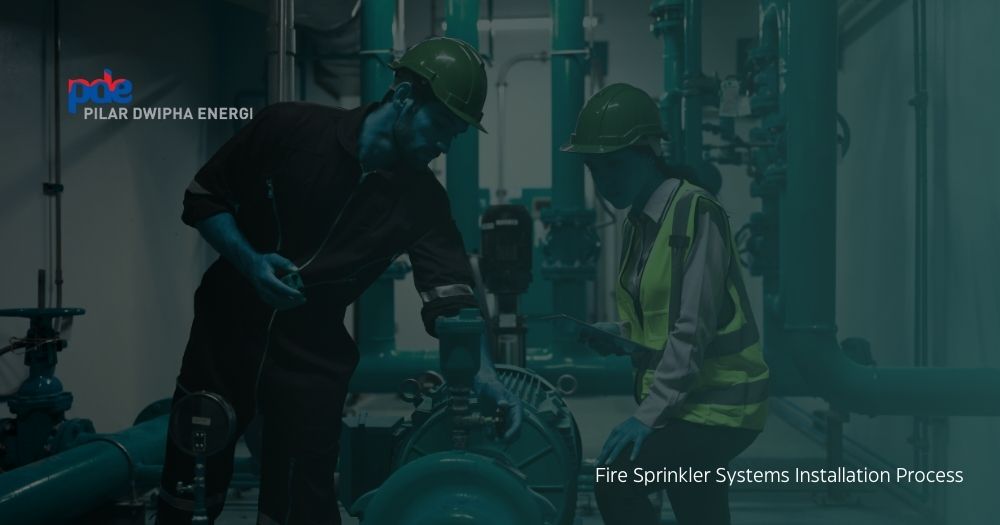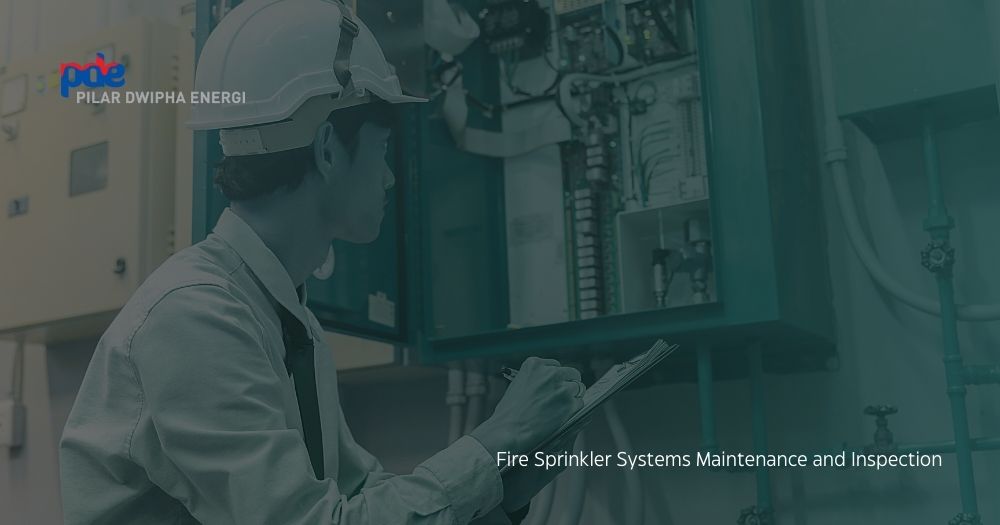Fire safety is a crucial aspect of protecting lives and property from the devastating effects of fire outbreaks. One effective measure that can significantly enhance fire safety is the installation of a fire sprinkler system.
This article aims to explore the importance of installing a fire sprinkler system and provide a comprehensive understanding of its various aspects.
Index
Understanding Fire Sprinkler Systems

What is a Fire Sprinkler System?
A fire sprinkler system is a crucial component of a building’s fire protection system. It is a network of pipes connected to a reliable water source that delivers water to areas affected by fire.
The system is designed to quickly detect and suppress fires, helping to save lives and minimize property damage. Each sprinkler head is strategically placed based on the building’s layout and fire risk areas, ensuring efficient coverage in case of an emergency.
Fire sprinkler systems are a proactive measure to combat fires, providing an immediate response to the presence of heat or smoke.
The sprinkler heads are individually heat-sensitive and only activate when the temperature reaches a certain threshold, preventing false alarms and unnecessary water discharge.
Different Types of Fire Sprinkler Systems
There is a variety of fire sprinkler systems available, each tailored to specific fire hazards and environmental conditions.
- Wet pipe sprinkler systems are the most common type, with water constantly stored in the pipes and ready to discharge upon activation.
- Dry pipe sprinkler systems, on the other hand, are ideal for cold environments where water may freeze, as they contain pressurized air instead of water until a sprinkler head is triggered.
- Pre-action sprinkler systems are a combination of wet and dry pipe systems, requiring two triggers to release water, making them suitable for areas with sensitive equipment or valuable assets.
- Deluge sprinkler systems, on the other hand, release water from all sprinkler heads simultaneously, often used in high-hazard facilities where a rapid response is essential to prevent the spread of fire.
The Role of Fire Sprinkler Systems in Fire Safety
Fire sprinkler systems play a crucial role in safeguarding lives and property in the event of a fire emergency.
These systems are meticulously designed to detect fires early and take immediate action to suppress them, effectively preventing the spread of flames and smoke within a building.
How Fire Sprinkler Systems Work
Fire sprinkler systems operate on a simple yet ingenious principle of heat detection and rapid response.
The individual sprinkler heads are strategically placed throughout a building and are activated when exposed to high temperatures, typically between 135-165 degrees Fahrenheit.
Once triggered, the sprinkler heads unleash a controlled deluge of water directly onto the flames, swiftly dousing the fire and halting its progression.
Moreover, modern fire sprinkler systems are equipped with advanced technologies that enable them to differentiate between actual fires and false alarms, ensuring a prompt and targeted response only when a genuine threat is detected.
The Impact of Fire Sprinkler Systems on Fire Outbreaks
The installation of a fire sprinkler system can have a profound impact on the outcome of a fire outbreak. Extensive research and real-world data have consistently demonstrated that buildings equipped with properly functioning sprinkler systems experience significantly lower rates of fire-related fatalities, injuries, and property damage.
Furthermore, the presence of fire sprinklers not only mitigates the immediate dangers posed by a fire but also buys valuable time for occupants to evacuate safely and for emergency responders to arrive on the scene.
This critical time buffer can make a life-saving difference in high-rise buildings, industrial facilities, residential homes, and various other structures where fires can escalate rapidly.
Evaluating the Benefits of Fire Sprinkler Systems

Enhancing Safety and Reducing Fire Damage
Fire sprinkler systems play a vital role in enhancing safety by providing early fire detection and automatic fire suppression. They minimize the spread of fire and give occupants more time to evacuate safely.
Additionally, these systems can directly reduce fire damage, as they can often suppress a fire before it has a chance to spread or intensify.
Moreover, modern fire sprinkler systems are equipped with advanced technologies that can detect fires in their incipient stages, even before smoke alarms are triggered.
This early detection capability is crucial in preventing small fires from escalating into major disasters, saving lives and protecting property.
Cost-Effectiveness of Fire Sprinkler Systems
Despite concerns about the cost of installation and maintenance, fire sprinkler systems can be highly cost-effective in the long run.
The potential losses caused by fire outbreaks, including property damage, business interruptions, and potential legal liabilities, usually surpass the initial investment in installing these systems.
Furthermore, many insurance companies offer discounts on premiums for buildings equipped with fire sprinkler systems, recognizing the significant risk reduction associated with these fire protection measures.
This financial incentive can offset some of the upfront costs and contribute to the overall cost-effectiveness of implementing fire sprinkler systems.
Fire Sprinkler Systems Installation Process

Pre-Installation Considerations
Prior to installing a fire sprinkler system, several factors need to be considered. These include building codes and regulations, water supply, system design, and coordination with other building systems.
Consulting with a professional fire sprinkler installer is crucial to ensure compliance and optimize system efficiency.
Understanding the layout of the building is essential in determining the most effective placement of sprinkler heads and pipes. Factors such as building occupancy, ceiling height, and potential fire hazards all play a role in the design process.
On top of that, the water supply must be able to provide adequate pressure and volume to ensure the system functions as intended in the event of a fire.
Step-by-Step Guide to Fire Sprinkler Installation
The installation of a fire sprinkler system involves meticulous planning and execution.
It typically includes tasks such as:
- designing the system layout,
- installing the pipes,
- positioning the sprinkler heads,
- connecting the system to the water supply,
- and conducting thorough testing to ensure proper functionality.
Once the system is installed, ongoing maintenance is crucial to ensure its continued effectiveness. Regular inspections, testing, and maintenance help identify any issues or potential problems that could compromise the system’s performance.
By staying proactive with maintenance, building owners can have peace of mind knowing that their fire sprinkler system is ready to protect lives and property in the event of a fire.
Fire Sprinkler Systems Maintenance and Inspection

Routine Maintenance Tasks
Regular maintenance is essential to keep fire sprinkler systems in optimal condition.
This includes:
- inspecting and testing sprinkler heads,
- checking for leaks or corrosion,
- verifying water pressure,
- and ensuring adequate water flow.
Additionally, any modifications or renovations to the building should be assessed for potential impacts on the system.
One crucial aspect often overlooked in routine maintenance is the importance of maintaining clear access to all sprinkler heads.
Ensuring that there are no obstructions such as storage boxes, shelves, or decorations near the sprinkler heads is vital for their proper functioning in case of a fire emergency.
Proper clearance around the sprinkler heads allows for unobstructed water distribution, maximizing the system’s effectiveness.
Professional Inspection and Servicing
Periodic professional inspections are crucial to identify any issues or deficiencies that may compromise the effectiveness of the fire sprinkler system. Trained technicians can conduct thorough inspections, perform necessary repairs, and ensure compliance with relevant codes and standards.
Moreover, beyond the physical components of the fire sprinkler system, professional inspections also encompass a review of the system’s hydraulic calculations and design specifications.
This comprehensive approach ensures that the system not only meets the minimum requirements for functionality but is also optimized for the specific layout and needs of the building it protects.
By delving into the technical aspects of the system, inspectors can fine-tune its performance and reliability. Feel free to discuss with us!
This article aims to explore the importance of installing a fire sprinkler system and provide a comprehensive understanding of its various aspects.
Index
- Undertranding Fire Sprinkles Systems
- What is a Fire Sprinkler System?
- Different Types of Fire Sprinkler Systems
- The Role of Fire Sprinkler Systems in Fire Safety
- How Fire Sprinkler Systems Work
- The Impact of Fire Sprinkler Systems on Fire Outbreaks
- Evaluating the Benefits of Fire Sprinkler Systems
- Enhancing Safety and Reducing Fire Damage
- Cost-Effectiveness of Fire Sprinkler Systems
- Fire Sprinkler Systems Installation Process
- Pre-Installation Considerations
- Step-by-Step Guide to Fire Sprinkler Installation
- Fire Sprinkler Systems Maintenance and Inspection
- Routine Maintenance Tasks
- Professional Inspection and Servicing
Understanding Fire Sprinkler Systems

What is a Fire Sprinkler System?
A fire sprinkler system is a crucial component of a building’s fire protection system. It is a network of pipes connected to a reliable water source that delivers water to areas affected by fire.
The system is designed to quickly detect and suppress fires, helping to save lives and minimize property damage. Each sprinkler head is strategically placed based on the building’s layout and fire risk areas, ensuring efficient coverage in case of an emergency.
Fire sprinkler systems are a proactive measure to combat fires, providing an immediate response to the presence of heat or smoke.
The sprinkler heads are individually heat-sensitive and only activate when the temperature reaches a certain threshold, preventing false alarms and unnecessary water discharge.
Different Types of Fire Sprinkler Systems
There is a variety of fire sprinkler systems available, each tailored to specific fire hazards and environmental conditions.
- Wet pipe sprinkler systems are the most common type, with water constantly stored in the pipes and ready to discharge upon activation.
- Dry pipe sprinkler systems, on the other hand, are ideal for cold environments where water may freeze, as they contain pressurized air instead of water until a sprinkler head is triggered.
- Pre-action sprinkler systems are a combination of wet and dry pipe systems, requiring two triggers to release water, making them suitable for areas with sensitive equipment or valuable assets.
- Deluge sprinkler systems, on the other hand, release water from all sprinkler heads simultaneously, often used in high-hazard facilities where a rapid response is essential to prevent the spread of fire.
The Role of Fire Sprinkler Systems in Fire Safety
Fire sprinkler systems play a crucial role in safeguarding lives and property in the event of a fire emergency.
These systems are meticulously designed to detect fires early and take immediate action to suppress them, effectively preventing the spread of flames and smoke within a building.
How Fire Sprinkler Systems Work
Fire sprinkler systems operate on a simple yet ingenious principle of heat detection and rapid response.
The individual sprinkler heads are strategically placed throughout a building and are activated when exposed to high temperatures, typically between 135-165 degrees Fahrenheit.
Once triggered, the sprinkler heads unleash a controlled deluge of water directly onto the flames, swiftly dousing the fire and halting its progression.
Moreover, modern fire sprinkler systems are equipped with advanced technologies that enable them to differentiate between actual fires and false alarms, ensuring a prompt and targeted response only when a genuine threat is detected.
The Impact of Fire Sprinkler Systems on Fire Outbreaks
The installation of a fire sprinkler system can have a profound impact on the outcome of a fire outbreak. Extensive research and real-world data have consistently demonstrated that buildings equipped with properly functioning sprinkler systems experience significantly lower rates of fire-related fatalities, injuries, and property damage.
Furthermore, the presence of fire sprinklers not only mitigates the immediate dangers posed by a fire but also buys valuable time for occupants to evacuate safely and for emergency responders to arrive on the scene.
This critical time buffer can make a life-saving difference in high-rise buildings, industrial facilities, residential homes, and various other structures where fires can escalate rapidly.
Evaluating the Benefits of Fire Sprinkler Systems

Enhancing Safety and Reducing Fire Damage
Fire sprinkler systems play a vital role in enhancing safety by providing early fire detection and automatic fire suppression. They minimize the spread of fire and give occupants more time to evacuate safely.
Additionally, these systems can directly reduce fire damage, as they can often suppress a fire before it has a chance to spread or intensify.
Moreover, modern fire sprinkler systems are equipped with advanced technologies that can detect fires in their incipient stages, even before smoke alarms are triggered.
This early detection capability is crucial in preventing small fires from escalating into major disasters, saving lives and protecting property.
Cost-Effectiveness of Fire Sprinkler Systems
Despite concerns about the cost of installation and maintenance, fire sprinkler systems can be highly cost-effective in the long run.
The potential losses caused by fire outbreaks, including property damage, business interruptions, and potential legal liabilities, usually surpass the initial investment in installing these systems.
Furthermore, many insurance companies offer discounts on premiums for buildings equipped with fire sprinkler systems, recognizing the significant risk reduction associated with these fire protection measures.
This financial incentive can offset some of the upfront costs and contribute to the overall cost-effectiveness of implementing fire sprinkler systems.
Fire Sprinkler Systems Installation Process

Pre-Installation Considerations
Prior to installing a fire sprinkler system, several factors need to be considered. These include building codes and regulations, water supply, system design, and coordination with other building systems.
Consulting with a professional fire sprinkler installer is crucial to ensure compliance and optimize system efficiency.
Understanding the layout of the building is essential in determining the most effective placement of sprinkler heads and pipes. Factors such as building occupancy, ceiling height, and potential fire hazards all play a role in the design process.
On top of that, the water supply must be able to provide adequate pressure and volume to ensure the system functions as intended in the event of a fire.
Step-by-Step Guide to Fire Sprinkler Installation
The installation of a fire sprinkler system involves meticulous planning and execution.
It typically includes tasks such as:
- designing the system layout,
- installing the pipes,
- positioning the sprinkler heads,
- connecting the system to the water supply,
- and conducting thorough testing to ensure proper functionality.
Once the system is installed, ongoing maintenance is crucial to ensure its continued effectiveness. Regular inspections, testing, and maintenance help identify any issues or potential problems that could compromise the system’s performance.
By staying proactive with maintenance, building owners can have peace of mind knowing that their fire sprinkler system is ready to protect lives and property in the event of a fire.
Fire Sprinkler Systems Maintenance and Inspection

Routine Maintenance Tasks
Regular maintenance is essential to keep fire sprinkler systems in optimal condition.
This includes:
- inspecting and testing sprinkler heads,
- checking for leaks or corrosion,
- verifying water pressure,
- and ensuring adequate water flow.
Additionally, any modifications or renovations to the building should be assessed for potential impacts on the system.
One crucial aspect often overlooked in routine maintenance is the importance of maintaining clear access to all sprinkler heads.
Ensuring that there are no obstructions such as storage boxes, shelves, or decorations near the sprinkler heads is vital for their proper functioning in case of a fire emergency.
Proper clearance around the sprinkler heads allows for unobstructed water distribution, maximizing the system’s effectiveness.
Professional Inspection and Servicing
Periodic professional inspections are crucial to identify any issues or deficiencies that may compromise the effectiveness of the fire sprinkler system. Trained technicians can conduct thorough inspections, perform necessary repairs, and ensure compliance with relevant codes and standards.
Moreover, beyond the physical components of the fire sprinkler system, professional inspections also encompass a review of the system’s hydraulic calculations and design specifications.
This comprehensive approach ensures that the system not only meets the minimum requirements for functionality but is also optimized for the specific layout and needs of the building it protects.
By delving into the technical aspects of the system, inspectors can fine-tune its performance and reliability. Feel free to discuss with us!

